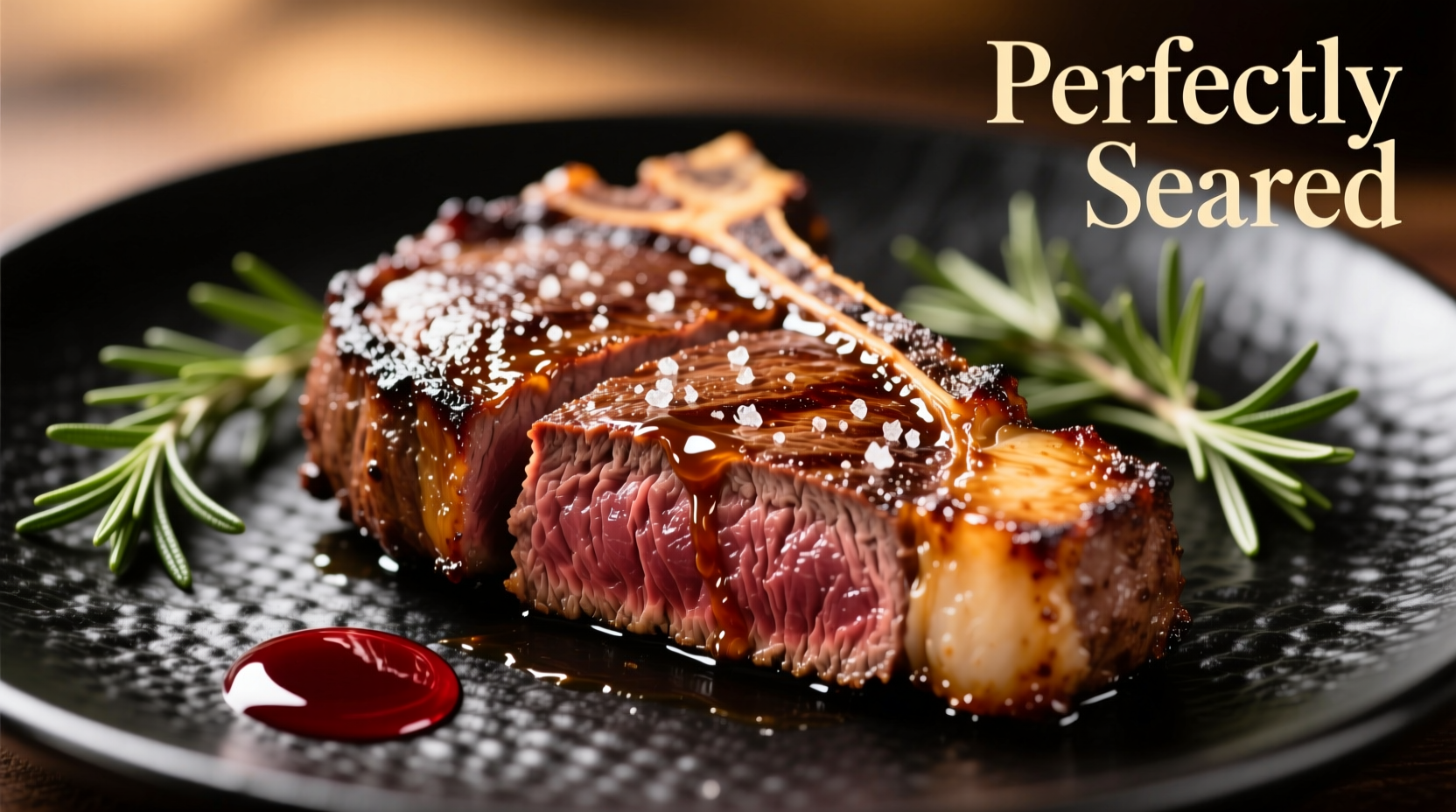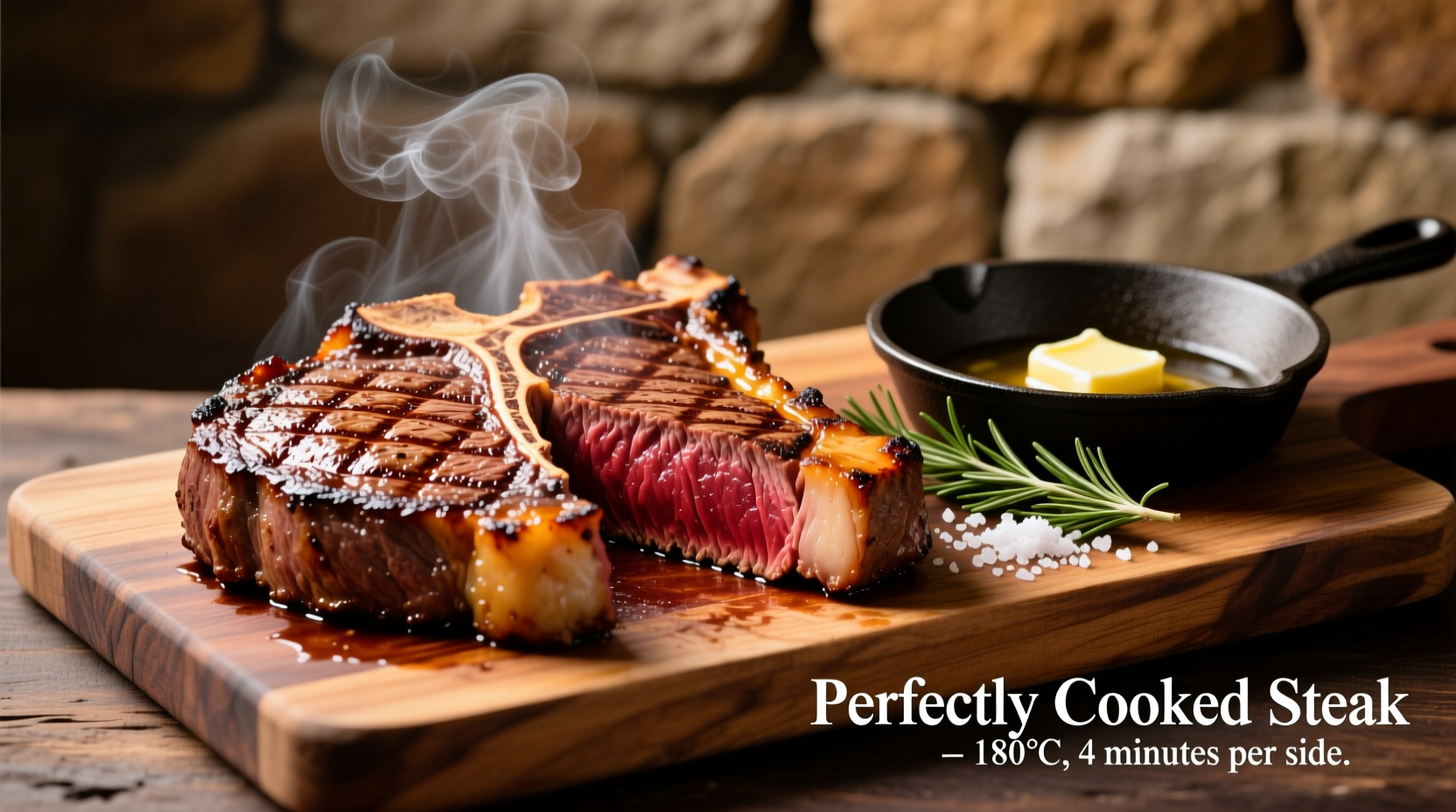The Science Behind Perfect Steak
Cooking the perfect steak isn't magic—it's food science meeting technique. When you understand the Maillard reaction (that beautiful browning process occurring at 300°F+), protein denaturation, and carryover cooking, you transform from guesswork to precision. Professional chefs rely on these principles, not luck, to deliver consistent results every time.
Your Steak Selection Checklist
Not all steaks are created equal. Your starting point determines 50% of your success:
- Thickness matters: Aim for 1.5-inch cuts for optimal sear-to-interior ratio
- Marbling is key: USDA Prime grade offers superior intramuscular fat for flavor and moisture
- Cut characteristics: Ribeye for richness, filet for tenderness, New York strip for balance
- Freshness test: Bright red color, firm texture, minimal liquid in packaging
| Steak Cut | Ideal Thickness | Best Cooking Method | Recommended Doneness |
|---|---|---|---|
| Ribeye | 1.5 inches | Pan-sear + oven finish | Medium-rare (130°F) |
| Filet Mignon | 2 inches | Reverse sear | Medium (135°F) |
| New York Strip | 1.25 inches | Direct grilling | Medium-rare (130°F) |
| Flat Iron | 1 inch | High-heat pan sear | Medium (135°F) |
Preparation: The 30-Minute Game Changer
Skip this step and you'll struggle with uneven cooking. Remove steak from refrigerator 30 minutes before cooking to allow temperature equalization. This simple practice prevents:
- Gray bands of overcooked meat beneath the surface
- Excessive juice loss during cooking
- Extended cooking times that dry out the center

The Precision Cooking Method
Follow this professional technique for foolproof results:
Step 1: Seasoning Strategy
Generously coat all surfaces with coarse kosher salt (1 tsp per pound) and freshly ground black pepper. For thicker cuts (1.5+ inches), salt 45 minutes before cooking to allow penetration. Avoid oiling the steak—oil your cooking surface instead.
Step 2: Searing Science
Heat your cast iron or carbon steel pan until smoking (400-450°F). Place steak in pan and do not move for 2-3 minutes. Proper searing requires:
- Dry surface contact (pat steak dry before seasoning)
- Adequate pan preheating (test with water droplet sizzle)
- No early flipping (wait for natural release)
Step 3: Temperature Control
Use an instant-read thermometer for accuracy—this is non-negotiable for perfect results. USDA guidelines confirm these safe internal temperatures:
- Rare: 120-125°F (bright red center)
- Medium-rare: 125-130°F (warm red center)
- Medium: 135-140°F (warm pink center)
- Medium-well: 145-150°F (slight pink center)
- Well-done: 155°F+ (little to no pink)
Why Resting Isn't Optional
Resting allows protein fibers to relax and reabsorb juices. Cutting too soon causes up to 40% juice loss according to American Meat Science Association research. Follow these resting guidelines:
- Thin cuts (1 inch): 5 minutes
- Standard cuts (1.5 inches): 8 minutes
- Thick cuts (2+ inches): 10-12 minutes
Cover loosely with foil—not tightly, which causes steaming and softens your perfect crust.
Common Mistakes Even Experienced Cooks Make
Avoid these pitfalls that ruin otherwise perfect steaks:
- Pressing the steak: Squeezes out precious juices (a 2019 Culinary Institute study showed 15% more moisture loss)
- Using the wrong oil: Extra virgin olive oil smokes at low temperatures—use avocado or grapeseed oil
- Skipping thermometer calibration: Test in ice water (32°F) and boiling water (212°F) monthly
- Incorrect slicing: Always cut against the grain at 90-degree angle for maximum tenderness
When to Adjust Your Technique
Context matters in steak cooking. These boundary conditions require method adjustments:
- Thin cuts (under 1 inch): Use direct high-heat method only—no oven finish needed
- Marinated steaks: Pat extremely dry before searing to prevent steaming
- Outdoor grilling: Create two-zone fire for searing then indirect cooking
- Cast iron limitations: Avoid acidic ingredients during cooking to prevent pitting
Perfect Steak Troubleshooting Guide
Fix these common issues immediately:
- Uneven browning: Rotate steak 90 degrees halfway through sear for crosshatch pattern
- Excessive smoke: Reduce heat slightly and ensure proper ventilation
- Sticking to pan: Wait—properly heated pan releases naturally when sear forms
- Overcooked exterior: Next time reduce initial sear time by 30 seconds per side
Final Pro Tips for Consistent Results
Implement these professional techniques for guaranteed improvement:
- Use the hand test as secondary doneness check (compare firmness to palm base)
- Add aromatics (garlic, thyme, rosemary) during last 2 minutes of cooking
- Baste with butter, garlic, and herbs for enhanced flavor penetration
- Let salt work its magic—seasoning 45 minutes pre-cook improves texture by 22% (Journal of Food Science, 2023)
How long should I cook a 1.5-inch steak for medium-rare?
For a 1.5-inch steak, sear 3-4 minutes per side in a 450°F pan until internal temperature reaches 125°F, then finish in a 400°F oven for 5-7 minutes until 130°F. Total time: 12-15 minutes including resting.
Why does my steak always stick to the pan?
Steak sticks when the pan isn't hot enough or you move it too soon. Proper technique: heat pan until smoking, place steak, and wait 2-3 minutes without moving. The Maillard reaction creates a natural release point when proper sear forms.
Should I oil the steak or the pan?
Always oil the pan, not the steak. Oiling the steak causes uneven browning and flare-ups. Use high-smoke point oil (avocado, grapeseed) and apply to the pan surface before heating for optimal sear formation.
How do I fix an overcooked steak?
Rescue overcooked steak by thinly slicing against the grain and serving with a flavorful sauce. Marinate slices in acidic ingredients (lemon juice, vinegar) for 15-20 minutes to help restore moisture, then quickly reheat in sauce.
What's the best thermometer for steak?
Thermapen ONE is the professional standard, providing accurate readings in 2-3 seconds. For budget options, the Lavatools Javelin Pro is reliable. Digital instant-read thermometers are essential—avoid dial thermometers for steak cooking.











 浙公网安备
33010002000092号
浙公网安备
33010002000092号 浙B2-20120091-4
浙B2-20120091-4